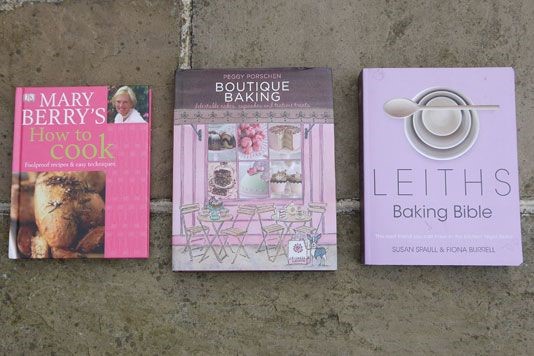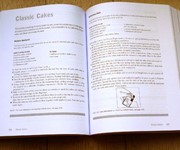The expert's guide to Victoria sponge - Leiths Baking Bible

In the second of a new series Laura Rowe investigates which are the best books (and cooks) to guide you on making a classic Victoria sponge.
The cookery school book: Leiths Baking Bible by Susan Spaull and Fiona Burrell
For those outside of the industry, the Leiths School of Food and Wine might mean very little. However, those in the know will tell you that this school, founded by Great British Menu’s Prue Leith, is one of the leading authorities on all things cooking and baking. Behind every great food writer is a Leiths diploma, and if not, at the very least one of their ‘bibles’.
For home cooks this book might not be an obvious choice, as there is a distinct lack of pictures – this is all about mastering the technique and not about drooling over food porn. In this book there is a whole section devoted to cake, and it's littered with tips that will transform your baking: set the oven to the correct temperature before starting to mix the cake; turn off the oven fan (if possible); place a shelf in the middle of the oven; use an oven thermometer; and make sure all of your ingredients are at the correct temperature. Baking is a science after all, and these teachers demand precision.
 The chapter talks you through every aspect of cakes, from the fats you can use (and when/why you should use them) to the flour, eggs, raising agents and sugars. It is all about troubleshooting. If you only have a square tin, instead of round, it tells you what the difference in dimensions should be. If you only have a small oven, which gets hot at the bottom, use a newspaper underneath the cake, to help protect it, the books says.
The chapter talks you through every aspect of cakes, from the fats you can use (and when/why you should use them) to the flour, eggs, raising agents and sugars. It is all about troubleshooting. If you only have a square tin, instead of round, it tells you what the difference in dimensions should be. If you only have a small oven, which gets hot at the bottom, use a newspaper underneath the cake, to help protect it, the books says.
There are illustrations and a guide to lining tins for different types of cake, and a break down of the different cake-making methods and things to remember. If using the “rubbing-in” method, fats should be cold; for “creaming” the ingredients should all be room temperature and any folding should be done with a metal spoon. If the cake has risen but has a dense texture, we are told it could be that the eggs were added too quickly and that the eggs have curdled, or that is was overfolded. If the cake is domed or cracked, it could be that the oven temperature was too high, the tin was too small or too much raising agent was used. There is always an answer!
There are tips on testing when the cake is cooked, how to cool and turn out the cake, or spilt it into layers – even about freezing and storing cakes. (Creamed cakes freeze well, if you’re asking). The Victoria sponge recipe specifically calls for butter and sugar to be creamed until pale and fluffy, then eggs should be gradually beaten in. Sifted self-raising flour is also added and, interestingly, water to create the correct “reluctant dropping consistency”.
Conclusion
If you want a foolproof but basic introduction to cakes, Mary is the wise owl to turn to. If you want to play around with creating beautifully designed cakes, Peggy knows her stuff. But if you want to really understand the principles of what makes cakes work and fail, in easy to understand language, then let the baking bible be your secret weapon. Comprehensive, no-nonsense, no frills – just brilliant baking.
So, who has helped you bake the best cakes? Tell us in the comments below.
Previous: Peggy Porschen's 'Boutique Baking'
Also see The experts' guide to bread making.
Comments
Be the first to comment
Do you want to comment on this article? You need to be signed in for this feature